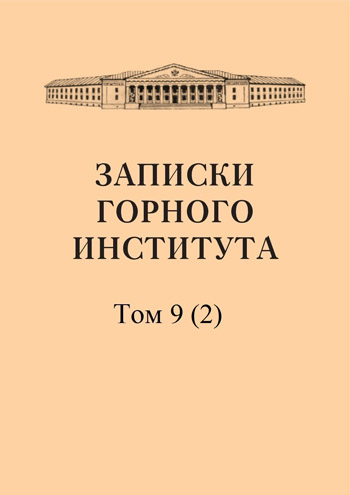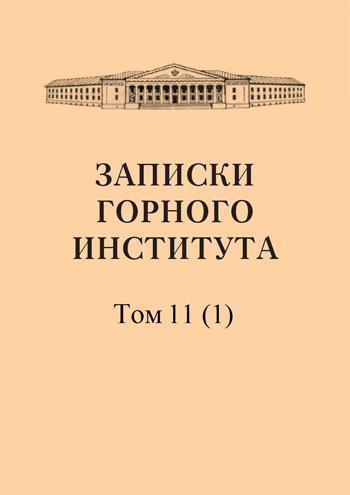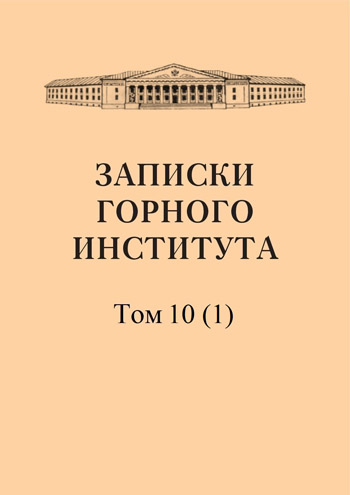-
Date submitted1934-08-06
-
Date accepted1934-10-13
-
Date published1935-02-01
About one important petrochemical regularity
- Authors:
- A. N. Zavaritskii
By "petrochemistry" we should understand the totality of our information about the chemical composition of rocks, consisting of “many” (in the mathematical sense) chemical analyzes of rocks, and the conclusions that can be drawn from this information. Developing those methods of calculation of chemical analysis that were used by Michel-Levy and Ozanne, the author of this article has shown in other works that the main features of the chemical composition of igneous rock, data in its analysis, can be especially conveniently reflected in the form of such series of ratios, the sum sets of which uniquely reflects the set of chemical analyzes and is equivalent to it (see article). The diagram clearly shows the desired correlation between the lengths and directions of the strokes, depending, obviously, on their position on the diagram. This shows an important correlation between the characteristics of the salic and femic components of an igneous rock.
-
Date submitted1934-07-17
-
Date accepted1934-09-26
-
Date published1935-02-01
Measuring lengths with a Stanley device
- Authors:
- B. Yu. Yuzefovich
The Stanley device is of interest from the point of view of the possibility of accurately measuring lengths using direct measurement methods using tapes. We present here a description of the research methods and methods for measuring lengths with the Stanley device in the form in which they were proposed by the author of this article and applied by him when measuring the Tsagakshinskii and Kalanguyskii bases of the Balei-Darasun triangulation network. The Tsagakshinskii basis was measured by the Stanley device due to the untimely delivery of the Iederin-Guillaume wires. Kalanguyskii was measured using Iederin-Guillaume wires; the tape is applied in one area for its standardization. Standardization of the tape once again confirmed the need for long-term study of the tape, both at the same and different temperatures, in order to obtain a clear picture of changes in the tape. The result obtained during standardization should be considered as the first experience and the first approximation in the subsequent series of observations to study the tape.
-
Date submitted1934-08-20
-
Date accepted1934-10-22
-
Date published1935-02-01
Experimental work using the gravimetric method at iron ore deposits of the Kola Peninsula
- Authors:
- D. G. Uspenskii
In the summer of 1933, the gravimetric team of the Scientific Research Sector of the Leningrad Mining Institute carried out experimental work using the gravimetric method on the iron ore deposits of the Kola Peninsula in the Zaimandrovskii region. The results of work using the gravimetric method show that this method gives excellent results when working in the area of iron ore deposits of the Kola Peninsula, despite the extremely difficult working conditions due to the highly developed topographic surface relief, the influence of the underground relief of bedrock, the heterogeneous structure of glacial deposits and the technical difficulties of making observations in conditions of the north. The gravimetric exploration method in combination with magnetometric and pit-hole operations provides great opportunities for both geological detailed mapping and the search for rich hematite ores. Research sector Leningrad Mining Institute
-
Date submitted1934-08-14
-
Date accepted1934-10-10
-
Date published1935-02-01
Lower Silurian corals of the Leningrad region (distribution and lifestyle)
- Authors:
- V. Yu. Cherkesov
In the Oidovich deposits in the area of the Gdov shale mines, Rugosa corals are found in the following two biocenoses: 1) Bryozoa hiogenosis in the upper parts of the Jeva layers with a significant number of bronchial and lamellar colonies of bryozoans and individual representatives of Rugosa. This biocenosis existed in the conditions of an alternating regime of slow currents and sediments of mucus and other substances. 2) Coral brachiopod biocenosis of the Middle Wesenberg layers with a significant number of individual corals, brachypods, spherical colonies of bryozoans and other fauns. A constant regime reigned here, strong currents, and the absence of foreign impurities in the lime deposits. In the sediments of the Middle Wesenberg strata, corals were discovered that had retained their natural position and were still attached to the former seabed. The edge of their cup is located horizontally to the surface, and the convex part is oriented towards the gentle slope of the rolls on the seabed - as shown in the figure. Analysis of the swells and the geological structure of this region show that the corals were mainly oriented with their convex part towards the currents prevailing here, which is confirmed by the theoretical assumptions of Prof. N. Yakovlev and is in direct opposition to Weissermel’s scheme. Paleontological office of LGI.
-
Date submitted1934-08-15
-
Date accepted1934-10-21
-
Date published1935-02-01
On the issue of studying diperse trace elements
- Authors:
- Ed. P. Libman
In the numerous ore and mineral formations of the deposits of our country, even such rare elements dispersed in the earth’s crust, such as thallium, germanium, cesium, cerium, indium, gallium, cadmium, hafnium, rhenium, etc., are undoubtedly concentrated. The listed elements usually do not form independent deposits, and their extraction is based on the fact that they are included in small quantities in the composition of some ores of ferrous and non-ferrous metals and other types of mineral raw materials. In creating a mobile raw material base for the elements under consideration, the primary task is a specific quantitative assessment of the values of certain contents in ores and large dumps of practically valuable components dipersed in all industrially interesting deposits, and primarily in deposits that will be put into operation in the coming years.


